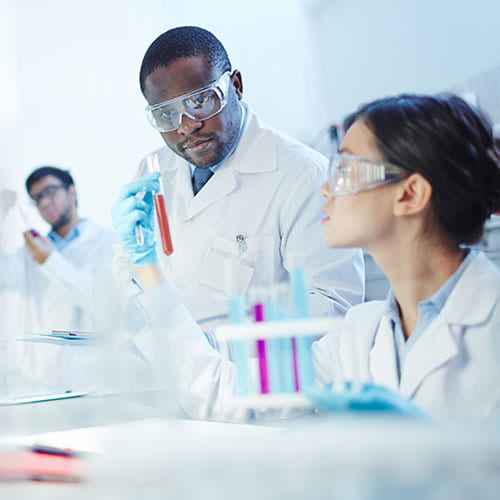By Kirstin Matthews, Ph.D.
Fellow in Science and Technology Policy
and
Daniel Moralí
Research Associate in Bioscience Policy
In 2020, thanks to the COVID-19 pandemic, science went from being a niche topic only nerdy people like us follow, to a major international issue and a focus of most conversations. We never imagined when the year started that we would be discussing so much science and watching science being conducted live on every major news source. It has been a bit of a whirlwind as we all started talking about coronaviruses, social distancing, vaccines, quarantining and efficacy. Seemingly overnight, everyone started discussing concepts previously familiar only to statisticians and public health experts: herd immunity, contact tracing, mortality rates. There was much debate over the prioritization of public health in the face of other social and economic interests, too. This year gave us extremely fast discoveries about the virus, including a vaccine already developed. Through this we learned how impressive and resilient the U.S. scientific enterprise is.
In March, many labs started shutting down in an attempt to restrict the spread of the SARS-CoV-2 virus, which causes COVID-19. But within days, we also saw many labs shifting their focus to participate in the struggle against the disease: sequencing the virus genome, determining how quickly it mutates, creating diagnostic tests, researching how the virus transmits, determining how it attacks the body, and following patient progress. In March we believed just isolation and disinfection of hands and surfaces would work, but later determined that, while not perfect, multi-layer cotton masks that could be created at home could help prevent the virus from spreading. We also learned that just testing those with symptoms was not enough; some people could walk around for weeks, passing the virus to others but not having any symptoms themselves, serving as silent carriers of the disease. We are still learning why some people are asymptomatic while some are hit hard for a few days but recover and still others suffer effects in other organs months later. There is so much we are learning and more that we are discovering each day.
Many people were perplexed by scientists’ apparently contrasting recommendations at different stages of the pandemic. However, this year also showed everyone how science works. It is not just one set of data that produces categorical facts, but an accumulation of information that sometimes leads to new hypotheses or theories. Each experiment or data point on COVID-19 or the SARS-CoV-2 virus is compared to the existing literature to help clarify what is happening. It is not surprising to see scientists suggesting one theory in March and promoting an alternative in September. As more information becomes available, scientists should be revising their opinions and hypotheses, viewing the problem differently, and promoting responses using the best available information.
As we look forward to 2021, we anticipate more data, a better understanding of how to combat the virus, and several new vaccines to prevent the diseases — all developed with the help of scientists in the U.S. and around the world. This year’s public science experiment has illustrated how science works. It’s just that now everyone is watching it, and not only the science nerds like us.
This blog post is the second in the Baker Institute Science and Technology Policy Program’s “What I Learned in 2020” series. Read the first entry here.
